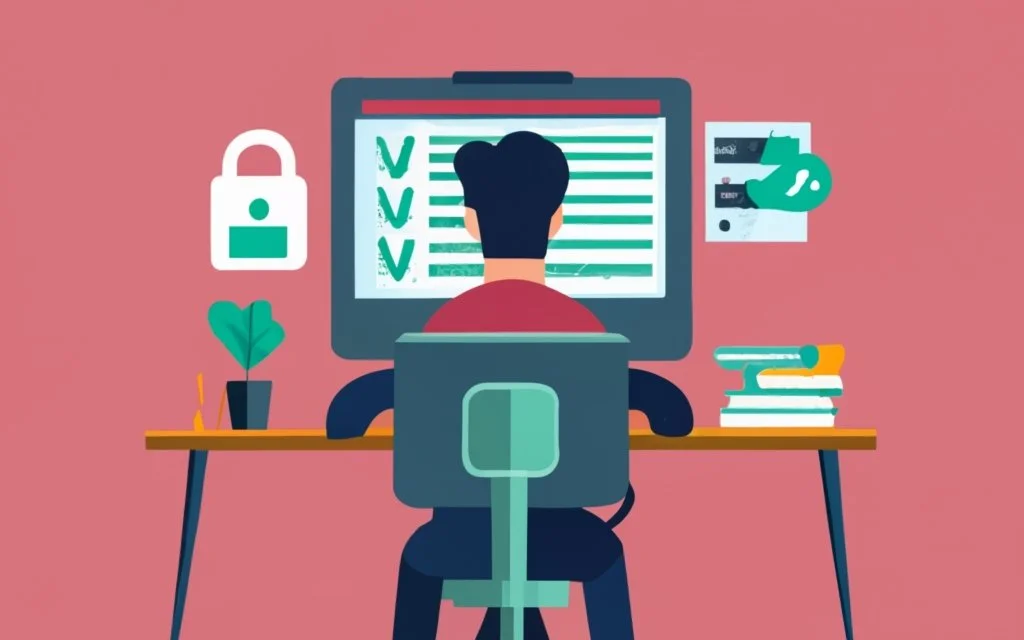Linux servers are the backbone of many critical systems and services, powering everything from web applications to databases and cloud infrastructure.
As a system administrator, ensuring the security of these servers is paramount. Cyber threats are constantly evolving, and vulnerabilities can be exploited if not properly addressed.
In this article, we’ll explore Linux server security best practices that system administrators can implement to protect their systems and data.

Get Your Free Linux training!
Join our free Linux training and discover the power of open-source technology. Enhance your skills and boost your career! Start Learn Linux for Free today!1. Keep Your System Up-to-Date
One of the fundamental principles of Linux server security is to keep the system up-to-date. Regularly apply security patches and updates to the operating system and installed software.
Vulnerabilities are frequently discovered, and timely updates help protect your system against known threats. Most Linux distributions offer tools like “apt” or “yum” to easily update packages.
2. Use Strong Authentication
Strong authentication is the first line of defense against unauthorized access. Use complex passwords and consider implementing multi-factor authentication (MFA) wherever possible.
SSH keys are a secure alternative to passwords for remote access, making it more difficult for attackers to guess or crack credentials.
3. Limit Access
Practice the principle of least privilege (PoLP). Restrict access to your server to only those who need it. Use tools like firewalls and network security groups to control incoming and outgoing traffic.
Utilize role-based access control (RBAC) to grant permissions only to authorized users.
4. Monitor and Log Activities
Effective monitoring and logging are essential for detecting and responding to security incidents. Set up comprehensive logging using tools like rsyslog or syslog-ng.
Regularly review logs for unusual activities and use intrusion detection systems (IDS) to identify potential threats.
5. Encrypt Communication
Encrypt data in transit by using secure protocols like TLS/SSL. Enable encryption for services such as SSH, HTTPS, and FTP. Avoid transmitting sensitive information in plaintext, as it can be intercepted by eavesdroppers.
6. Employ a Firewall
A firewall is a crucial security measure that filters incoming and outgoing network traffic. Configure a firewall to allow only necessary connections and services.
Tools like iptables or firewalld provide robust firewall capabilities for Linux.
7. Harden Your Server
Server hardening involves minimizing vulnerabilities by disabling unnecessary services and functions. Remove or disable unused software, ports, and protocols.
Utilize security profiles and scripts like “chkrootkit” and “Lynis” to detect and mitigate threats.
8. Regular Backups
Backups are your safety net in case of data loss or system compromise. Implement regular backup procedures to ensure that critical data can be restored.
Use a combination of on-site and off-site backups to protect against different types of disasters.
9. Conduct Security Audits
Regularly conduct security audits and vulnerability assessments on your server. Tools like Nessus or OpenVAS can help identify security weaknesses and provide recommendations for mitigation. Address vulnerabilities promptly to enhance server security.
10. Secure Remote Access
Secure remote access to your server through SSH by implementing best practices like disabling root login, changing the default SSH port, and using SSH key-based authentication. Consider using tools like fail2ban to prevent brute-force attacks.
11. Implement File System Permissions
Utilize file system permissions to control access to files and directories. Restrict permissions to the minimum necessary for users and processes. Regularly audit file and directory permissions to identify and remediate issues.
12. Regular Security Training
Keep your team well-informed about security best practices. Offer regular security training to system administrators and other staff who interact with the server. Encourage them to stay updated on the latest security threats and trends.
13. Enable Security Extensions
Many Linux distributions offer security extensions like SELinux (Security-Enhanced Linux) or AppArmor. These extensions add an additional layer of security by enforcing mandatory access controls on processes and files.
14. Conduct Incident Response Planning
Prepare for security incidents by developing an incident response plan. Define procedures for identifying, mitigating, and recovering from security breaches. Test the plan periodically to ensure its effectiveness.
Conclusion
Securing a Linux server is an ongoing process that requires vigilance and proactive measures.
By following these Linux server security best practices, system administrators can significantly reduce the risk of security breaches and data compromises.
Remember that no system is entirely immune to threats, but a well-protected server is better equipped to withstand and respond to them.
Stay informed about emerging threats and adapt your security measures accordingly to keep your Linux servers safe and reliable.

CVE-2023-4911: Looney Tunables – enables local attackers to gain root privileges in Linux - howtouselinux
Wednesday 4th of October 2023
[…] Linux Server Security Best Practices for System Administrators […]
Harry Fam
Tuesday 3rd of October 2023
I had a experience of Openssl hack. OpenSSL is not an operating system, it's a crucial component often used on Linux servers. The vulnerability allowed attackers to access sensitive data, including user credentials and private keys, from vulnerable servers. It affected a large number of websites and services running on Linux servers.
David Cao
Wednesday 4th of October 2023
Thanks for sharing this.
Daniel
Monday 2nd of October 2023
Totally agree!!